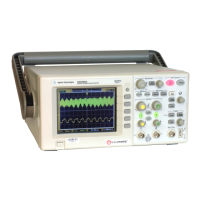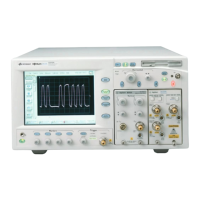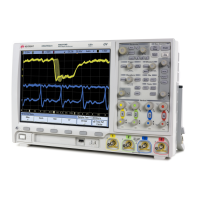:SBUS<n> Commands 27
Agilent InfiniiVision 3000 X-Series Oscilloscopes Programmer's Guide 661
:SBUS<n>:CAN:SIGNal:DEFinition
(see page 1138)
Command Syntax
:SBUS<n>:CAN:SIGNal:DEFinition <value>
<value> ::= {CANH | CANL | RX | TX | DIFFerential | DIFL | DIFH}
The :SBUS<n>:CAN:SIGNal:DEFinition command sets the CAN signal type
when :SBUS<n>:CAN:TRIGger is set to SOF (start of frame). These signals
can be set to:
Dominant high signals:
• CANH — the actual CAN_H differential bus signal.
• DIFH — the CAN differential (H-L) bus signal connected to an analog
source channel using a differential probe.
Dominant low signals:
• CANL — the actual CAN_L differential bus signal.
• RX — the Receive signal from the CAN bus transceiver.
• TX — the Transmit signal to the CAN bus transceiver.
• DIFL — the CAN differential (L- H) bus signal connected to an analog
source channel using a differential probe.
• DIFFerential — the CAN differential bus signal connected to an analog
source channel using a differential probe. This is the same as DIFL.
Query Syntax
:SBUS<n>:CAN:SIGNal:DEFinition?
The :SBUS<n>:CAN:SIGNal:DEFinition? query returns the current CAN
signal type.
Return Format
<value><NL>
<value> ::= {CANH | CANL | RX | TX | DIFL | DIFH}
See Also • "Introduction to :TRIGger Commands" on page 877
• ":SBUS<n>:MODE" on page 633
• ":SBUS<n>:CAN:SIGNal:BAUDrate" on page 660
• ":SBUS<n>:CAN:SOURce" on page 662
• ":SBUS<n>:CAN:TRIGger" on page 663

